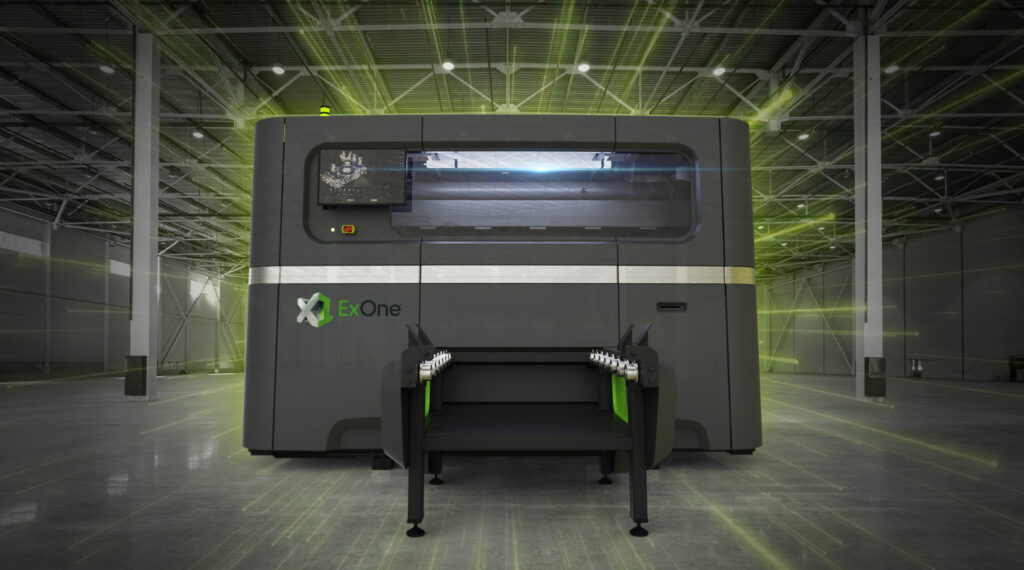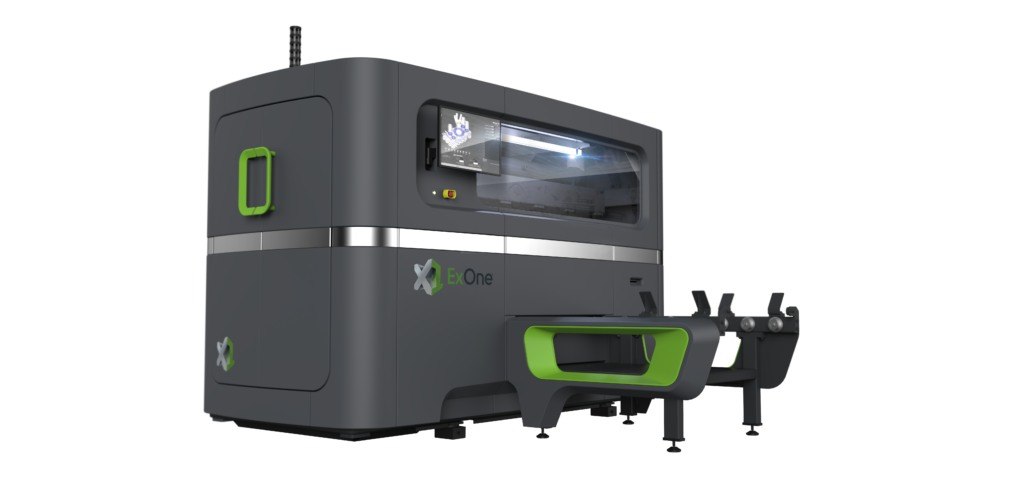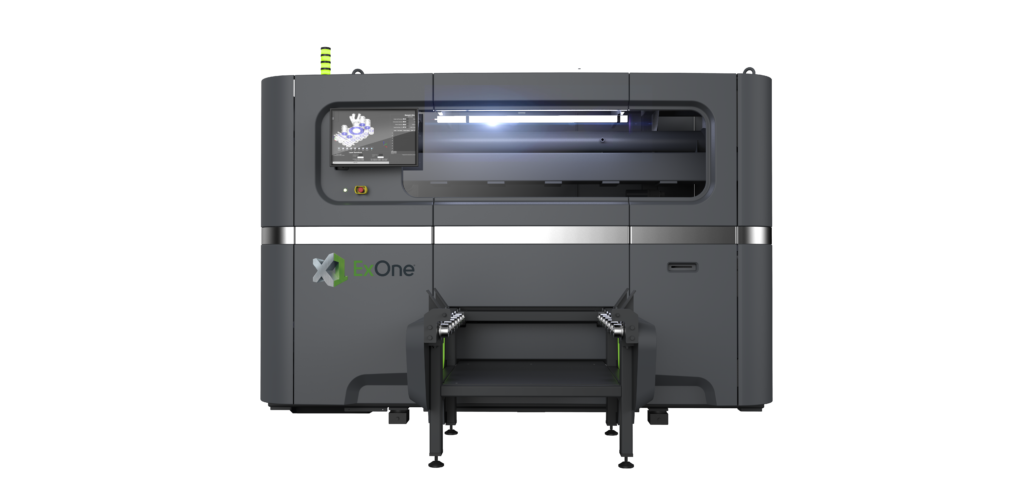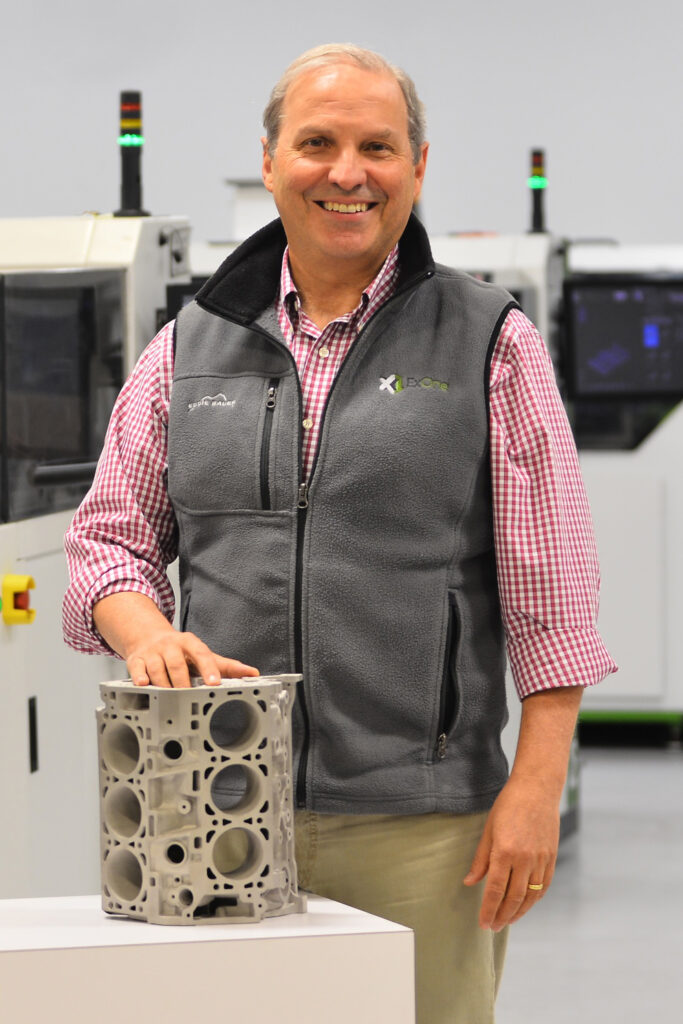
ExOne has been making binder jetting 3D printers for years now. The firm has developed processes to make sand cores and to use binder jetting to make metal parts. Where other firms such as Desktop Metal focus on smaller machines and GE and HP seem to be building up a mid range offering ExOne has always focussed on the industrial market. Along with Voxeljet the firm has been working in oil and gas, automotive, shipbuilding and other industries for years with metal cast or infiltrated parts.

Binder jet traditionally has not had the accuracy of DMLS (powder bed) nor does it have DED’s ability to construct parts of several meters in length. What binder jetting does have is the ability to make inexpensive parts with a series of steps including printing, sintering, and debinding. Desktop Metal thinks that these machines will become ubiquitous while GE and HP seem to be focussing on every site having one for small series and prototypes. ExOne, however, wants to go the high volume industrial route, however. Today it releases the X1 160Pro – a high yield binder jetting system that will be the world’s largest.

The 800 x 500 x 400 mm, has a build volume of 160 liters, 10,000 cm3/hour build speed and launches with six materials. Besides stainless steels and Inconels the firm is also open to developing new powders for the right customers. Right now 316L, 304L, and 17-4PH stainless are all available. It is interesting to note that ceramics are also available on the new system. Also exciting is that the new ExOne system is a single alloy system. Previously ExOne was able to offer 3D printed steel parts that were subsequently infiltrated by another metal such as bronze. Now, this single alloy system dispenses with that and lets the firm offer pure stainless steels and the like without another infiltration metal. This should make their offering much more palatable to manufacturing companies who are more familiar with single alloys. What’s more, the new system works with the familiar MIM powders as well which should equate to more cost savings and also give engineers more of a warm hug of working with the known.

The company has also developed Triple ACT, which is their novel method for depositing, spreading and compacting powder. 3DPrint.com got the chance to interview ExOne CEO John Hartner, who disclosed that Triple ACT lets you “get a more consistent and higher density green part” which leads to “more predictability” and for a “tighter production process.”
The company already has “several customers in automotive, aerospace, defense, and industrial” who are printing “thousands to tens of thousands of parts with the new system.” The system is “fast, low cost, scalable and flexible” and is a “production-ready system.” The company has been working on the MIM powder single alloy process for over six years now but now has “the largest installed base of binder jet for single alloy.” Hartner adds that this is significant because “customers believe the scalability of single alloy metal” and the “combination of ACT and the MIM powders with qualified materials” leads to “known properties and known characteristics of parts in a reliable and tested material.” The 160 lets customers make both bigger and more parts than other binder jetting systems.
Current customers include companies in commercial space, automotive, industrial and aviation industries as well as defense. Typical parts are used on things like “unmanned systems such as drones as well as weapons systems.” Customers are currently almost exclusively large multinationals in those areas at the moment. The parts that are being manufactured are comparatively low cost (for our industry). Still, “new complex organic parts that offer lightweighting, reduced part count and the other classic 3D printing advantages are the main driver for adoption.”
New materials under development Hartner mentioned were “more Inconels, tool steels, ceramics, recycled materials, silicon carbide, and aluminum.” He stressed that this was an ongoing process with development partners and that the slated arrival of these materials may take until 2023.
Recycled materials would have a huge potential military application, letting militaries recycle shells, packaging and other discarded metals into new tools of war for them. Silicon carbide is a super interesting material for our industry. Traditionally used in cutting tools and with potential applications (in new alloys) in aerospace that could be a key development. The fact that ExOne is also now producing ceramics on the system also means that there are more choices in ceramics production for potential customers. Ceramics is a highly under-exploited area in 3D printing and could use some more development. In the near term, I’m most excited about aluminum, however. To me, it’s the perfect material for binder jetting. In and of itself lightweight it could really make for interesting parts for automotive and really open up new areas in marine. All in all this is another solid move towards a more production-oriented 3D printing industry.
Subscribe to Our Email Newsletter
Stay up-to-date on all the latest news from the 3D printing industry and receive information and offers from third party vendors.
Print Services
Upload your 3D Models and get them printed quickly and efficiently.
You May Also Like
Making 3D Printing Personal: How Faraz Faruqi Is Rethinking Digital Design at MIT CSAIL
What if your 3D printer could think more like an intelligent assistant, able to reason through a design idea, ask questions, and deliver something that works exactly the way the...
Reinventing Reindustrialization: Why NAVWAR Project Manager Spencer Koroly Invented a Made-in-America 3D Printer
It has become virtually impossible to regularly follow additive manufacturing (AM) industry news and not stumble across the term “defense industrial base” (DIB), a concept encompassing all the many diverse...
Heating Up: 3D Systems’ Scott Green Discusses 3D Printing’s Potential in the Data Center Industry
The relentless rise of NVIDIA, the steadily increasing pledges of major private and public investments in national infrastructure projects around the world, and the general cultural obsession with AI have...
Formlabs Teams Up with DMG MORI in Japan
In late June, Nick Graham, Chief Revenue Officer at Formlabs, announced on LinkedIn that the company had partnered with DMG MORI, one of the world’s leading machine tool companies, to...

































